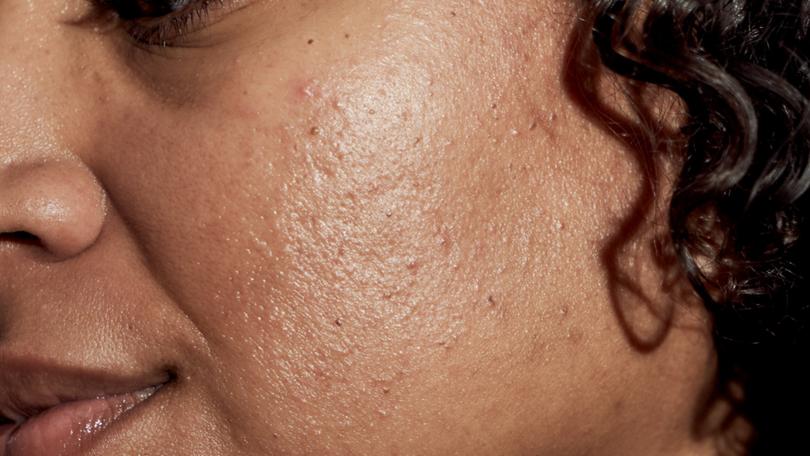The New York Times (Science Times): I’m an adult, so why am I getting acne?

Q: I rarely got pimples when I was a teenager. Now, I get them all the time, and it’s embarrassing. Why am I getting acne as an adult?
Once you reach adulthood, you’d probably think that you’d be done with pimples for good. But dermatologists say that it’s common to get acne in your 30s, 40s and beyond — even if you never had breakouts as a teen.
Adult acne can come as a shock, said Dr. Carmen Castilla, a dermatologist in New York City, and it can be more embarrassing than it was when you were younger.
Sign up to The Nightly's newsletters.
Get the first look at the digital newspaper, curated daily stories and breaking headlines delivered to your inbox.
By continuing you agree to our Terms and Privacy Policy.The good news is that while the cause of adult acne is not always as “textbook” as when you were a teenager, said Dr. Ross Radusky, a dermatologist in Dallas, it’s treatable at any age.
Causes of Adult Acne
All cases of acne occur when your pores become clogged with oil, dead skin cells and dirt, according to the American Academy of Dermatology. But when you get acne as an adult, it may be because of several factors that didn’t come into play during your teenage years:
HORMONES: Adolescent acne is typically caused by changing hormones during puberty, according to the AAD. But normal hormonal fluctuations that happen later in life can also be to blame for most adult acne cases, said Dr. Lauren Ploch, a dermatologist in Aiken, South Carolina.
Your skin produces more oil when your hormones fluctuate, and that excess oil can clog your pores and interact with bacteria on your skin, causing acne.
Hormonal acne is common among women throughout their lives, especially during the days surrounding menstruation; during pregnancy or menopause; or when starting or stopping oral contraceptives, according to the AAD. Men with naturally high testosterone levels may also be prone to acne.
MEDICATIONS: Acne can be a side effect of certain medications, including some mental health drugs like lithium or corticosteroids like prednisone, Ploch said. Testosterone medication, birth control pills, some seizure medications and certain supplements such as B vitamins and whey protein may also cause acne, she said.
GENETICS: Acne is sometimes a lifelong problem for people with certain skin types — for instance, if you have naturally oily skin or slower skin-cell turnover, where you retain dead skin cells that clog your pores, Ploch said. These problems can intensify with age and hormonal changes, she said. A family history of adult acne may mean you’re more likely to get it, as well, Castilla said.
STRESS: Stress increases levels of the hormone cortisol, which boosts the skin’s oil production and can lead to breakouts, Radusky said. Stress-related acne usually resolves once the stressor subsides. Stress can affect other areas of life too, including your sleep and eating habits, which might contribute to acne as well, Ploch said.
Treating Adult Acne at Home
You can typically treat mild acne with topical over-the-counter products.
A benzoyl peroxide wash can be a good starting point, since it has antibacterial and skin-drying properties and helps unclog pores, Ploch said. Adapalene (a retinoid medication) and azelaic acid (a medication that kills bacteria and clears out pores) can help clear up acne, Castilla said. Products containing salicylic acid also help exfoliate the skin, which promotes turnover of dead skin cells and keeps pores from getting clogged.
However, Radusky said that because your skin gets drier as you age and lose collagen, these products may be too drying and irritating for some adults. If so, he recommended using products with glycolic acid, a gentle chemical exfoliant, to boost skin-cell turnover without drying out your skin.
It can take four to six weeks to see improvements with over-the-counter products, so it’s important to use them consistently, Castilla said. Look for moisturizers, sunscreens, and cleansers labeled “oil free” or “non-comedogenic,” Ploch said, which won’t clog your pores.
When to See a Dermatologist
If chemist products aren’t working; if you notice scarring or dark spots from your breakouts; or if your acne is sinking your self-esteem, see a dermatologist, Radusky said.
They can help determine the cause by reviewing your medications, diet, allergies, stress, medical conditions and more. A dermatologist can also make sure that your breakouts are actually acne.
“There’s a lot of acne mimickers as we get older,” Radusky said.
For instance, he said, rosacea sometimes resembles acne, and a type of fungal infection called malassezia folliculitis can also cause pimplelike bumps.
Based on the cause and your skin type, Castilla said that dermatologists have many treatments to offer, including prescription topical medications and topical or oral antibiotics.
Spironolactone, an oral medication that blocks certain hormones in the body, is sometimes recommended for severe hormonal acne in women. And isotretinoin, commonly known as Accutane, is an effective oral acne medication, though it can cause serious side effects, including birth defects and depression. It is most commonly prescribed for “deep, painful acne cysts and nodules,” according to the AAD.
This article originally appeared in The New York Times.
© 2023 The New York Times Company
Originally published on The New York Times
